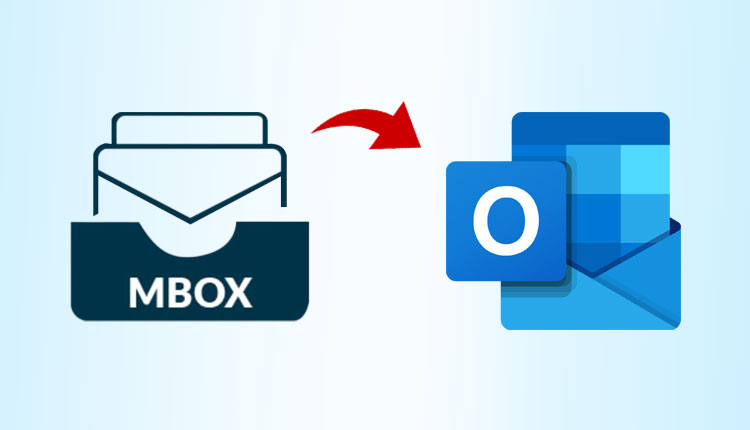The food delivery industry has undergone a massive upheaval in recent years. Online ordering and on-demand services have become crucial components of modern life, driven by technology breakthroughs and altering consumer desires – food delivery applications have become fundamental parts of modern living! This article investigates upcoming food delivery trends and breakthroughs in app development, with the goal of directing the field’s future development.
Smartphones and high-speed internet have transformed how consumers access food services, allowing meal delivery applications to serve as a convenient and seamless solution to customers’ needs for delectable culinary goods. The ease of use of these applications — ordering from a variety of eateries with just a few taps on a mobile device – has contributed to their rapid growth.
One of the defining meal delivery app development themes is “personalization.” Apps now use this data to tailor recommendations based on individual tastes or cater to dietary restrictions or allergies, increasing user satisfaction while strengthening customer relationships through personalized menus, thanks to technology that allows for vast amounts of user data collection and analysis.
Artificial intelligence and machine learning technology have transformed the meal delivery experience. AI-powered algorithms aid in the prediction of order volumes, optimization of delivery routes, and precise prediction of arrival times, eventually enhancing efficiency and minimizing wait times, resulting in improved customer satisfaction ratings.
During the epidemic, significant advancements included contactless delivery methods. Customers now have access to contactless drop-off places that ensure safety and hygiene during delivery operations; this food delivery trend may become permanent as people become accustomed to the ease and assurance it provides.
Dark kitchens (also known as virtual or ghost kitchens) have also transformed the food delivery environment, operating solely online orders with no dine-in facilities, serving a larger audience, and experimenting with different cuisines, encouraging culinary curiosity.
Types of Food Delivery Apps
There are numerous food delivery apps, each with its own set of features and functionalities.
- Aggregator Apps
Aggregator food delivery applications function as virtual food courts, providing customers with a selection of restaurants on one platform, allowing users to compare menus, pricing, and ratings across restaurants to make informed decisions about where their meal comes from. Uber Eats, DoorDash, and Grubhub are examples of aggregator applications that display appropriate eateries near where users live or are.
- New Apps for Delivery
Aggregator applications like Postmates are growing into advanced forms that also provide delivery services, allowing businesses without their own delivery systems to continue serving great meals to their consumers. These food delivery trends collaborate with restaurants to provide clients meals from restaurants that would never ordinarily deliver, providing more of their favorites than would ever arrive directly.
- Apps for Logistics
Logistics apps mostly focus on the delivery component of food ordering processes. They collaborate with restaurants that handle ordering independently while leaving logistics to these apps, offering restaurants more independence from maintaining a delivery fleet while enhancing delivery range and efficiency without increasing costs. Zomato is one example of such a platform.
- Apps for Direct Ordering and Delivery
Many large restaurants and food chains now offer food delivery apps that allow customers to place orders directly with them rather than through third parties – an approach that has proven particularly successful with McDonald’s and Starbucks apps, where users can order through and pay directly using these apps, sometimes earning loyalty points or rewards in the process!
- Apps for Cloud Kitchen or Ghost Kitchen
Cloud kitchen apps are a relatively new concept, consisting of delivery-only restaurants without actual locations that dramatically cut overhead expenses by receiving orders via apps, prepping in a common cooking facility, and then being delivered. This distinct model is used by both Kitchen United Mix and Rebel Foods.
- Apps for Grocery Delivery
Although grocery delivery apps may not exactly fall under the ambit of food delivery apps, they do allow users to shop for groceries from the comfort of their own homes, including raw materials and ready-to-cook meals or even pre-prepared dishes, such as Instacart or Amazon Fresh.
- Apps for Meal Kit Delivery
Meal kit delivery apps, such as Blue Apron and HelloFresh, deliver pre-portioned meal ingredients and recipes directly to consumers’ homes, taking the guesswork out of cooking for those with limited time or who simply do not enjoy planning or shopping for ingredients themselves.
How Do Food Delivery Apps Make Money?
Let’s dig deeper into their revenue models:
- Delivery Free
Food delivery apps make money mostly through delivery costs charged to customers when they place an order. Each order is charged a price based on the distance, duration, and complexity of delivery; this accounts for a large portion of their total revenue. - Markup on prices
Food delivery apps frequently inflate delivery prices; this markup can range from 5% to 40%, depending on company regulations or agreements with eateries. While this is not ideal for customers, it is a typical practice across many apps.
- Restaurants’ commissions
Food delivery apps charge restaurants a commission rate that is typically agreed upon between them and their restaurant partner and can range between 15%-30% of order value – given the high volume of orders that these apps facilitate, this represents significant sources of revenue for restaurants that order through these apps.
- Promotions and advertising
Food delivery apps offer restaurants and food chains advertising and promotional possibilities on their platforms, such as banner placement, sponsored listings, and special specials that help your business or food chain reach more people. Their cost is determined by their reach and the efficiency of their promotional activities.
- Models of Subscription
Food delivery apps, such as UberEats’ Eats Pass and DoorDash’s DashPass memberships, have recently begun offering subscription models to their customers, providing benefits such as reduced delivery fees and exclusive deals in exchange for monthly or annual membership fees, which help generate consistent revenue streams for these apps.
- Collaborations and alliances
Food delivery apps frequently develop restaurant partnerships in order to give unique specials or menu items. Partnership agreements may include upfront payments made by the restaurant, increased commission rates for certain promotional offers or deals, and income sharing between companies.
- App Store Purchases
Food delivery apps have begun to include extra items or services, such as grocery delivery or merchandise sales, within their apps. This diversity generates extra revenue while keeping customers engaged with the app and enhancing customer retention.
- Monetization of Data
meal delivery applications amass massive amounts of information about consumer behavior, preferences, and meal delivery trends. Though restrictions prohibit the direct sale of personal data, food delivery apps can use aggregated, anonymized data as another revenue stream by giving analytics services to restaurants or food chains – generating more cash from that service alone!
The Future of Food Delivery Apps
The most important elements influencing the future of meal delivery apps.
- Hyper-Personalization
Food delivery apps of the future will use AI and machine learning technologies to personalize customer experiences via AI-powered recommendation engines that analyze previous orders, user behavior patterns, and dietary preferences of their users to offer tailored recommendations and menu suggestions aimed at creating seamless experiences that make customers feel understood, valued, and appreciated – leading to increased customer retention rates as a result of pervasiveness.
- Drone and self-driving vehicle deliveries
With the introduction of drones and autonomous cars as enhanced delivery mechanisms, an on-demand food delivery app development company can look forward to an exciting future. Amazon and Google have already undertaken extensive testing with this cutting-edge technology, paving the way for food delivery applications to quickly integrate it. Companies that use drone deliveries can dramatically reduce delivery costs in congested locations. The use of self-driving vehicles would also eliminate the need for human drivers, making delivery even more efficient and cost-effective. The prospects of this technical advancement offer immense potential for on-demand food delivery services in general, ushering in an era of increased efficiency and convenience.
- Practices that are Long-Term
As environmental concerns grow, food delivery apps must prioritize sustainability in their operations. Customers are growing more aware of their carbon footprint and expect businesses to contribute to environmental protection. Food delivery apps will follow suit by implementing environmentally friendly practices such as biodegradable packaging or employing electric delivery trucks where appropriate, as well as collaborating with restaurants that prioritize sustainable sourcing or waste reduction initiatives.
- Augmented Reality (AR)
Menu Visualization in Augmented Reality (AR) has the potential to transform meal ordering experiences by providing customers with more dynamic visualizations of menu items. Users can point their smartphones at any physical menu or restaurant storefront to see digital overlays featuring various dishes with descriptions and customer reviews, engaging customers more closely than ever before and making more informed decisions with higher levels of customer satisfaction than ever before!
- Smart Home Device Integration
Food delivery apps will soon use smart home technologies to provide their services more seamlessly, including voice command ordering from devices such as smart speakers or displays; additionally, food delivery apps will send updates directly to customers’ smart devices for an improved and seamless customer experience. One of the most recent food delivery trends that must be followed is integration with smart home devices.
- Ghost Restaurants and Virtual Kitchens
The food delivery scene will be transformed by virtual kitchens (VKs) and ghost eateries. VKs serve solely as delivery hubs, extending restaurants’ delivery reach without the need for physical dining spaces; ghost restaurants, on the other hand, operate solely through delivery services without traditional storefronts – these food delivery trends will continue to grow in order to provide consumers with more options when ordering cuisines online.
- COVID-19 Contactless Delivery and Payment are promoted by Pandemic
Food delivery apps will stress safety and cleanliness by offering contactless options such as leaving orders at the doorstep or locker for safe pickup as a result of the epidemic. Furthermore, secure contactless payment will become the norm, reducing ordering processes even further.
Also Read: How Much Does It Cost To Develop An App Like Taskrabbit?
The Last Wise Words
Food service apps have changed how people get their favorite meals and eat them. Customers can now order food from places and have it delivered right to their door. This makes their lives easier and more efficient.
One of the best things about food service apps is how easy they are to use. No longer do people have to talk on the phone for a long time or wait in long lines at restaurants. Now, customers can explore different options at their fingertips and pay securely through multiple methods. This makes dining out or ordering in an amazing experience and changes how people think about it. This smooth experience has brought in a huge number of customers and changed the way people eat and what they expect from restaurants in a big way.
Food delivery apps have also had a huge effect on the restaurant business. They have made it easier for local restaurants that had trouble getting new customers to reach a larger market through these apps. As a result, this has led to an exciting food culture where people can try new flavors and support small local companies at the same time.
As technology changes, it looks like food service apps will only get better. Innovations in technology, like artificial intelligence and machine learning, are making user experiences better and better. They are becoming more intuitive and can make suggestions based on a person’s preferences, dietary restrictions, and buying history. IoT-connected smart home gadgets should make it even easier and more hands-free to place an order.
Environmentalism isn’t just an afterthought when it comes to developing food delivery apps. Many platforms actively look for eco-friendly packaging options and route optimization techniques to reduce carbon emissions, which no doubt contributes a lot to their success. As people become more aware of the environment when making decisions, these kinds of attempts will become even more important.



